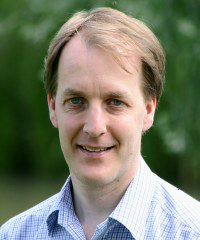讲课老师: 英国剑桥大学物理系Neil Clement Greenham教授
授课对象:材料、物理、化学专业高年级本科生,低年级硕博士生
课程题目: What Does Science Tell Us About Whether Renewable Energy is Feasible?
时间: 第一讲:2017年10月23日19:00-21::00
第二讲:2017年10月24日15:00-17:00
第三讲:2017年10月25日19:00-21:00
地点: 科技园国重大楼N308A
欢迎广大师生积极参加!
材料科学与工程学院
2017年10月16日
课程摘要:
This short series of lectures aims to show how we can analyse the challenges surrounding sustainable generation, storage and use of energy using relatively simple ideas from physics and chemistry. The lectures will focus on understanding the physical limits of energy technologies. Would it, even in principle, be possible to generate China’s energy needs from renewable (non-nuclear) sources, without breaking the constraints of physics and geography? Without going into too much detail, we will also look at how close current engineering gets to the physical limits. Of course economics and politics will determine what happens in practice, and these lectures will not focus on these aspects. Instead, we will try to make approximate but quantitative estimates of what might be possible from particular energy technologies, so we can make meaningful comparisons between the large numbers on both sides of the energy supply and demand equation.
The approach draws heavily on the book Renewable Energy Without the Hot Air, by David MacKay. The book is available freely online at www.withouthotair.com, and students are encouraged to look there, either before or after the lectures.
The lectures should be accessible to anyone with a basic grounding in physics or chemistry, including undergraduate and graduate students. The style of the lectures will be less traditional and more interactive than you may be used to. Particularly in the first lecture, you will need to make estimates, discuss them with your fellow students, and not be shy to participate.
Each of the three lectures will be approximately 2 hours in duration, with a short break at the halfway point.
Lecture 1.
How much energy do you use per day? How much is used on your behalf, or for manufacturing goods for export? We will come up with estimates based on everyday experience, and compare them with the official numbers for the whole country.
How much power can a wind turbine generate? How many cars could be powered by one wind turbine? What fraction of China would we need to cover with wind farms to generate all its electricity demand, or all its energy demand?
What about solar? What efficiencies can be achieved, in theory and in practice? What total amount of generation is realistic? Does it make sense to import electricity from sunnier places? What are the relative advantages of solar thermal and solar photovoltaic systems?
Lecture 2
Why is some energy more useful (and expensive) than other energy? The concept of exergy as a measure of the ability to do useful work. Efficiencies of engines and heat pumps. What is the most efficient way to heat your home? A gas fire is almost 100% efficient at converting chemical energy to heat; how can we do better than this?
What storage capacity do we need to cope with intermittency in renewable energy generation? What technologies might allow this, and how big would they need to be? How do batteries and fuel cells work, and why are fuel cells so much less efficient? Is there a role for hydrogen as a transport or storage fuel?
Lecture 3
Does it make sense to grow crops for biofuels? What is the efficiency of photosynthesis, and where is energy lost in the complicated chain of photosynthetic processes? When might biofuels play a role, despite the low efficiency of photosynthesis?
Clearly we will need a mix of energy technologies to decarbonise the energy sector at a national and global level. What combinations of choices on supply, storage and demand might work? We will use online tools such as tool.globalcalculator.org to investigate. If enough students have access to a laptop/tablet with an internet connection you will be able to experiment during the lecture to find your own solution.
Note: Greenhan 教授建议所有听课的同学尽可能携带可连接WiFi的手提电脑来听课,他会让同学们在课程中看一些网上的材料以进行互动。
Greenham教授简历:
Neil Greenham is Professor of Physics at the Cavendish Laboratory, University of Cambridge. His research focuses on novel low-dimensional semiconductors that can be deposited from solution, in particular conjugated polymers and semiconductor nanocrystals. During his Ph.D. at Cambridge he made important early advances in the development of polymer light-emitting diodes, improving efficiencies and understanding the physics of device operation. He was a Miller Fellow at the University of California, Berkeley from 1995-96, where he developed the first solar cells based on blends of polymers with inorganic semiconductor nanocrystals. His research now focuses on photovoltaics, using device measurements, spectroscopy, advanced imaging techniques and modelling to understand and control loss mechanisms, thus improving device performance. He was awarded the Royal Society Kavli Medal and Lecture in 2013.

